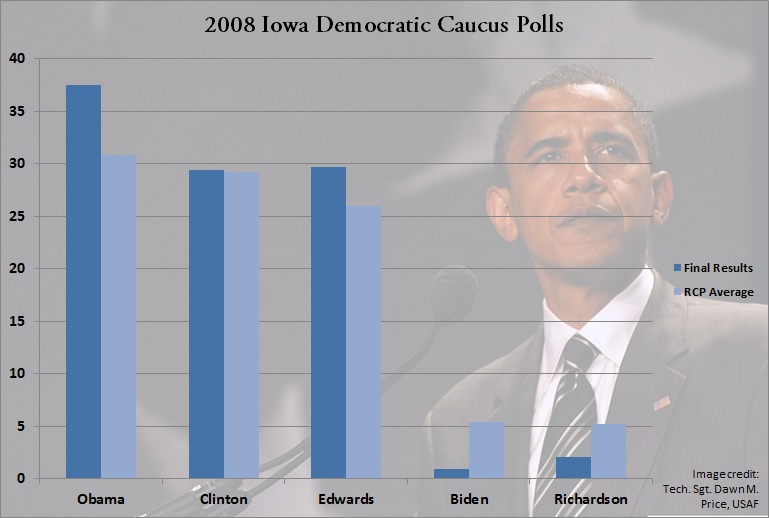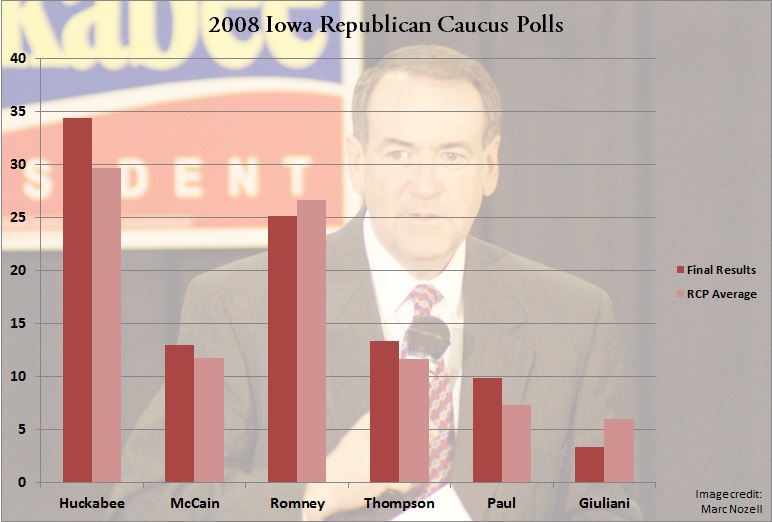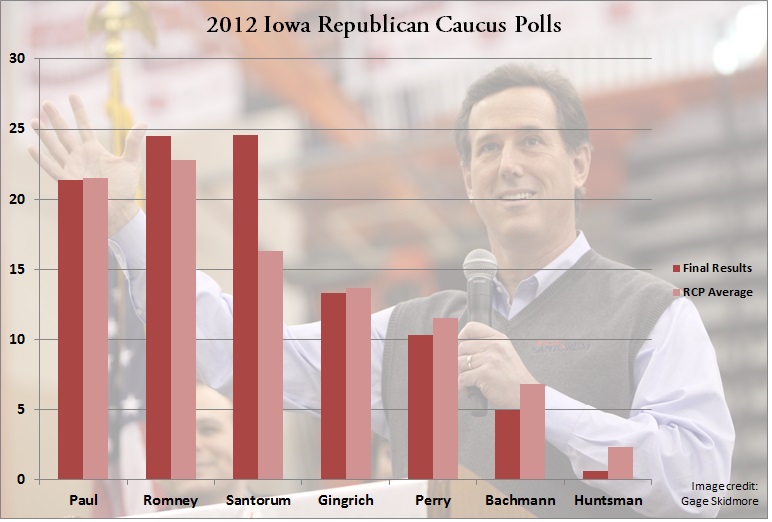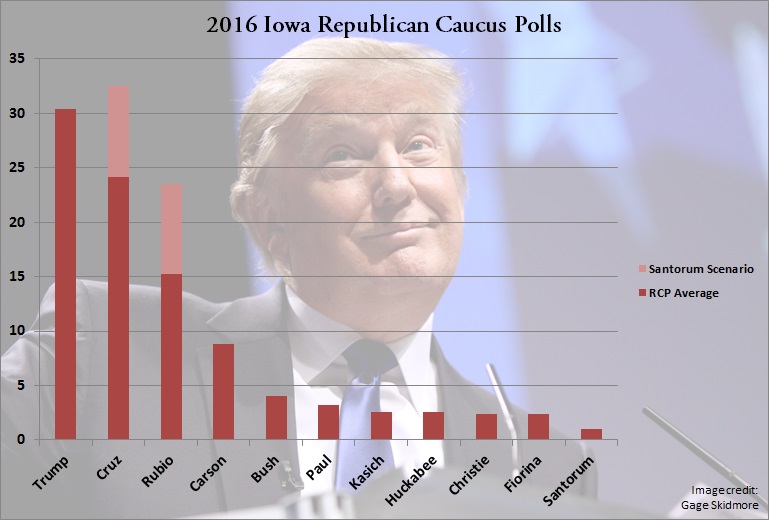Senators Ted Cruz and Marco Rubio need a last-minute charge to compete in Monday’s Iowa Republican Caucus. Recent precedent shows that Cruz could overtake Donald Trump to capture first place. Rubio would need an historic surge to win — but he could at least be in the mix by making up ground similar to what Rick Santorum accomplished in the last presidential election.
I’ve put together a few simple charts comparing the final RealClearPolitics average of polls in past Iowa Caucuses with the actual results on voting day. In 2008 and 2012, the eventual winner, both Democrat and Republican, outperformed their final polling average by at least five points. It’s worth noting that Cruz trails Trump by that exact margin in the famous Des-Moines Register/Bloomberg Politics poll, which is the final survey prior to caucus day.
The three charts — two for the Republicans in 2008 and 2012, and one for the Democrats in 2008 — show that Santorum, the former Pennsylvania senator, pulled off the biggest Iowa rally in recent history. He performed 8.3 points better than his last polling average, when he trailed former Gov. Mitt Romney and former Rep. Ron Paul going into the caucus.
I took this margin and graphed it on top of Cruz’s and Rubio’s latest numbers to visualize how such a strong showing over their current poll standing could help them contend against Trump, who has been the frontrunner by a consistent handful of points in the last week.

In 2008, Barack Obama broke open a tight contest with Hillary Clinton to win by 8 points. Heading into caucus day, the two were separated by only 1.6 points.

On the Republican side that year, it was a two-way race between Huckabee and Romney, with the former Arkansas governor holding a three-point edge on the eve of the caucus. But when the day came, Huckabee outperformed his final polling average by 4.7 points — and Romney underperformed his by 1.5.

In 2012, Santorum was sandwiched in the middle of Romney and Paul, the leaders, and Newt Gingrich and Rick Perry, who were running a respectable fourth and fifth place. In fact, Santorum led Perry by about as much as he trailed Romney. But his charge on caucus day carried him to a narrow victory over Romney, the eventual nominee.

What does Santorum’s performance say for Monday’s caucus? Not anything, necessarily — whereas as the 2012 GOP primary was a series of flirtations with multiple candidates, Trump has led nationally for months, and fended off challenges from Cruz and Ben Carson to lead in most Iowa polls in January. Additionally, this year looks to be a two-man race between Trump and Cruz, whereas five candidates were within 11 points of each other in 2012.
However, the rise of Santorum last election provides a yardstick for Cruz and Rubio, who could wind up making headlines with a similar last-minute burst.

